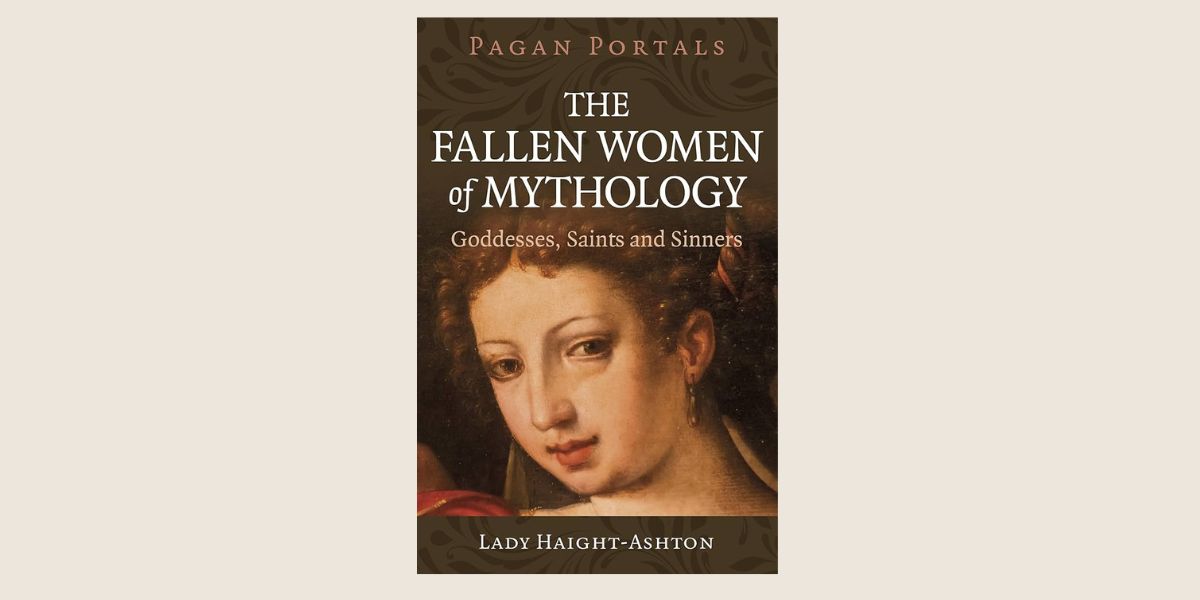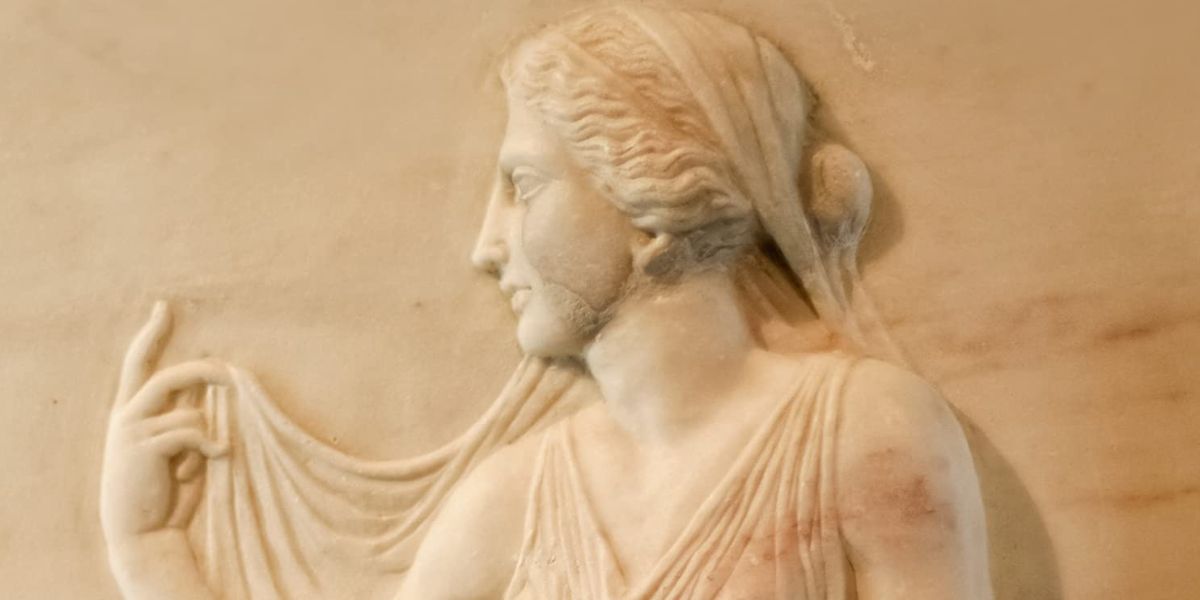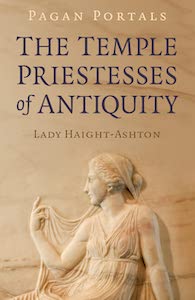
Pagan Portals – The Fallen Women of Mythology: Goddesses, Saints, and Sinners, by Lady Haight-Ashton
Moon Books, 180341636X, 112 pages, October 2024
Pagan Portals – The Fallen Women of Mythology: Goddesses, Saints, and Sinners by Lady Haight-Ashton is a fascinating exploration into the lives and legends of women who have been labeled as “fallen”. This book delves into the complexities and dualities of these figures, offering a nuanced perspective that challenges traditional narratives, challenging stereotypes that have boxed them into these disempowering labels. Seeking to present these women in a new light, acknowledging their strength and agency, Haight-Ashton reclaims the stories of those often misunderstood or misrepresented.
Haight-Ashton covers quite a range of women in this book, from accused witches to Greek and Hindu goddesses, along with Christian saints and women in the Bible. There’s a good mixture of mortal and divine women, sharing insight into the historical background of some, which earned them a sort of mythology based on their so-called “deviance”, and classical mythological figures who have aspects of the feminine that have been denounced, feared, or condemned.
“Using the power of the word, I have chosen a diverse cross section of remarkable women with compelling stories. Some are obscured and others known, but all of their stories are worthy of our notice.”1
The information given about each woman is relatively short. Some entries are only a few paragraphs, while others might span a page. For those looking to go deeper, additional research would be necessary.
This book is more a compendium to honor the fallen women and introduce them to readers, commemorating their stories and offering a new perspective about their life.
There’s something sacred about taking the time to remember these women. This book might appear to be a quick read, as it’s only 112 pages, but I often found myself pausing to reflect on the women, the time period she lived, and the challenges she faced. I started to realize how connected all women are, throughout time and space, and the necessity to avoid judgement, criticism, and putting blame on others who don’t fall into our own conception of “good”.
I also started to reflect on the portrayal of women in the Bible while reading this book. I turned my back on my Christian upbringing quite some time ago, but reading about all the women classified as prostitutes, given no other reference to their personhood or character, made me angry at the sexual discrimination. Haight-Ashton does a great job showing their misrepresentation, indicating how they were misunderstood and then villainized for centuries to come.
The final chapter is filled with odes to the fallen women. There’s a liturgy, in memories, multiple odes to sinners, and three hymns to goddesses. For those also feeling the collective rage or grief that can be stirred up by this material, this chapter presents an opportunity to actively commemorate all the women who have befallen the fate of having their name smeared, lives ruined, and precious memories distorted.
Overall, I feel Pagan Portals – The Fallen Women of Mythology would be great for women who want a reminder of what has been collectively endured and put upon them throughout time. For those facing similar challenges now, such as discrimination or sexism, there will absolutely be stories of solidarity to remind you that we’ll keep on fighting no matter what. Remembering these fallen women is a testament to the strength of spirit we all have within. Honoring these women by reading their story is a wonderful way to show love to the rebel and fighter within ourselves! Lady Haight-Ashton offers a fresh perspective on well-known myths, encouraging readers to question and explore beyond traditional narratives.
Alanna Kali is an astrologer, numerologist, and pioneer spirit that loves to explore life through the lens of depth psychology. She has a passion for studying the humanities and social trends. Her academic work is centered upon reuniting body, mind, and spirit through eco-psychology. She loves reading, spending time in nature, and travel.


